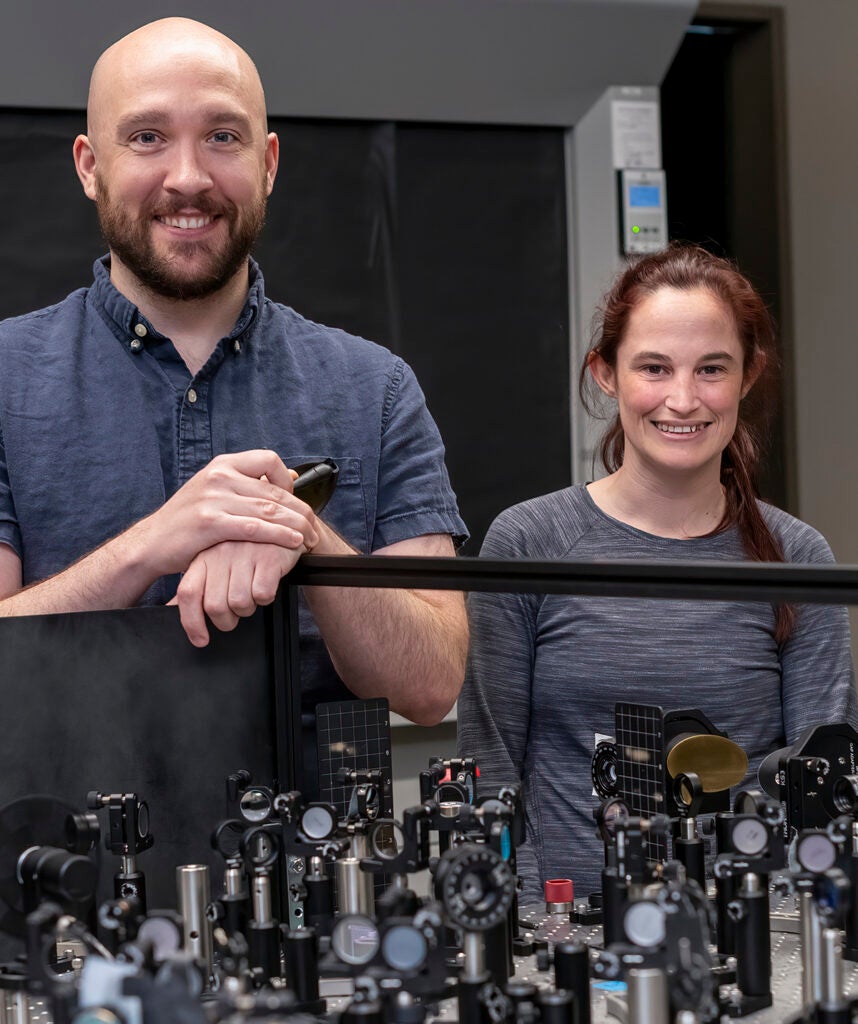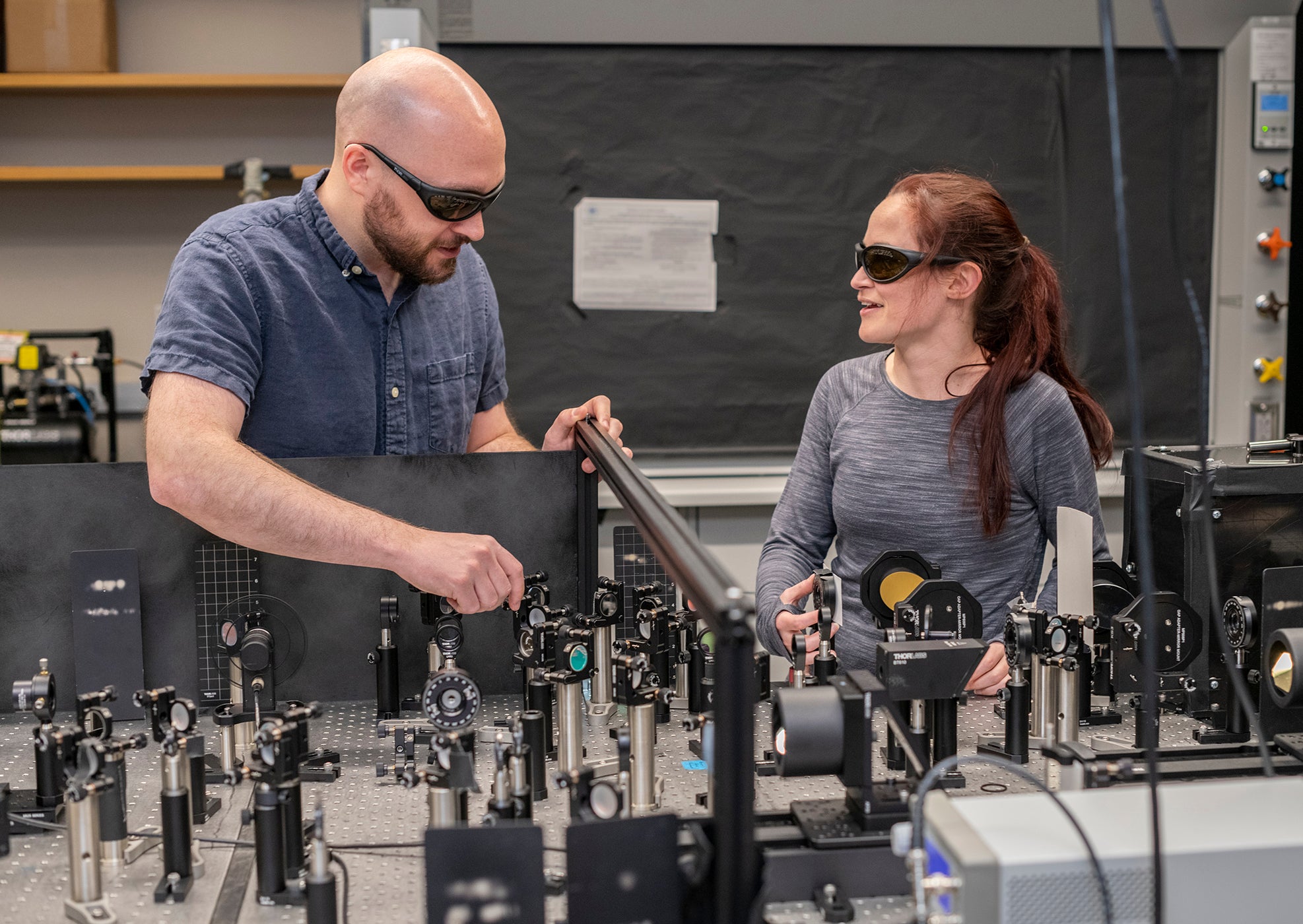KINGSTON, R.I. – June 15, 2022 – How would you like to work at Argonne National Laboratory’s Advanced Photon Source in Chicago?
Sounds like something from the distant future, right? But it’s as current and real as the work University of Rhode Island doctoral student Cali Antolini is doing as part of the U.S. Department of Energy’s Office of Graduate Student Research Program.
At the close of the spring semester, Antolini started working at the Advanced Photon Source, a synchrotron radiation facility, to research the efficiency of materials such as tin halide perovskites, an interest to scientists for their potential to capture solar energy and produce electricity more efficiently. The sixth-month fellowship provides Antolini with a stipend and funds for living expenses. URI covers her tuition and fees.

Antolini, who hails from Fountain, Colorado, and now lives in Wakefield, is one of 80 graduate students from 21 states participating in the program. According to a news release issued by the Office of Science, the students will be involved in world-class training and have access to state-of-the-art facilities and resources at Department of Energy national laboratories. “The program prepares graduate students to enter jobs of critical importance to the DOE mission and secures the U.S. position at the forefront of discovery and innovation,” the announcement said.
“For decades, DOE has cultivated the expertise to meet the nation’s greatest scientific challenges,” said Under Secretary of Science and Innovation Geraldine Richmond. “Now we need to invest in a diverse, talented pipeline of scientists, engineers and entrepreneurs who will be the future science and innovation leaders of this country.”
Antolini is working with Michael Hu, a beamline scientist and physicist at Argonne, and URI Professor of Chemistry Dugan Hayes to use X-rays to see what happens when electrons in tin sulfides and halide perovskites are exposed to a source of light. In her research, the light source is a powerful, ultrafast laser.
Antolini’s work continues her research with Hayes at Argonne that began the summer of 2019 and was scheduled to continue in the summers of 2020 and 2021, but COVID-19 prevented that. Hayes will make periodic visits over the summer to Argonne to work with Antolini.
“It’s really great that Cali gets to finish what we started,” Hayes said.
“In my work at URI with Professor Hayes and during my fellowship at Argonne, we are working on methods to make solar power materials cheaper and more efficient,” Antolini said. “This is directly related to my doctoral dissertation, and this prestigious DOE fellowship has sent me to a place where only this type of research can be conducted.”
Antolini is relying on the Argonne lab’s Advanced Photon Source to provide ultra-bright, high-energy X-ray beams to probe changes in the tin sulfides and halide perovskites following excitation from an optical laser using a technique called nuclear forward scattering.
“We are using the X-rays from the photon source as gamma rays to look at the tin nuclei and see how they change in response to the absorption of light by the electrons in the materials. By watching these processes on the ultrafast timescale, we can discover ways to enhance the tin halide perovskite’s stability without sacrificing efficiency,” Hayes said.
“Cali is doing something no one has ever done before,” Hayes said. “Combining nuclear forward scattering with ultrafast lasers to get a transient Mössbauer spectrum is new.”
Hayes said his lab has a Mössbauer spectrometer and lasers, but there is no way to synchronize them without the advanced technology available at the Argonne National Laboratory.
Antolini is researching these reactions because tin halide perovskites are much less expensive to manufacture than silicon, which is the current standard in photovoltaic materials. It carries a much lower risk of toxicity than a lead perovskite, which is also being used in solar materials. But, there is a catch. Tin halide perovskites are not as efficient as either lead perovskites or silicon for turning sunlight into energy.
For every 4 watts of sunlight collected by lead perovskites and silicon, 1 watt of electricity is produced. But for tin halide, it is closer to 10 watts of sunlight for every 1 watt of electricity.
“We are trying to figure out what we can about the process, so engineers and others can build on what we learn about tin halide perovskites and use that knowledge to design better materials and systems for collection and conversion of solar energy to electricity,” Hayes said.
Asked what she hopes to do after earning her Ph.D. in chemistry in the spring of 2023, Antolini said, “My preference would be to continue working with X-rays in a national laboratory and doing what I am doing right now.”

